Robert K. Ross
Center for Hope and Healing


Hope Lives Here: A Village of Real Hope
In the shadow of downtown L.A.’s skyscrapers, not far from the towering Men’s Central Jail, a 1.95-acre dusty, concrete parking lot bounded by metal fencing will be but a memory as a visionary campus springs to life.
Envisioned as a place of hope and healing aimed at helping those most harmed by a legacy of racism and the criminal justice system, the Robert K. Ross Center for Hope and Healing will offer affordable housing, a full-scale community, and health services to uplift the economic and societal well-being of formerly incarcerated, unhoused, and economically disadvantaged residents.
It will create a welcoming, integrated healing space for all members of the surrounding community to play, share, work, learn, and thrive.
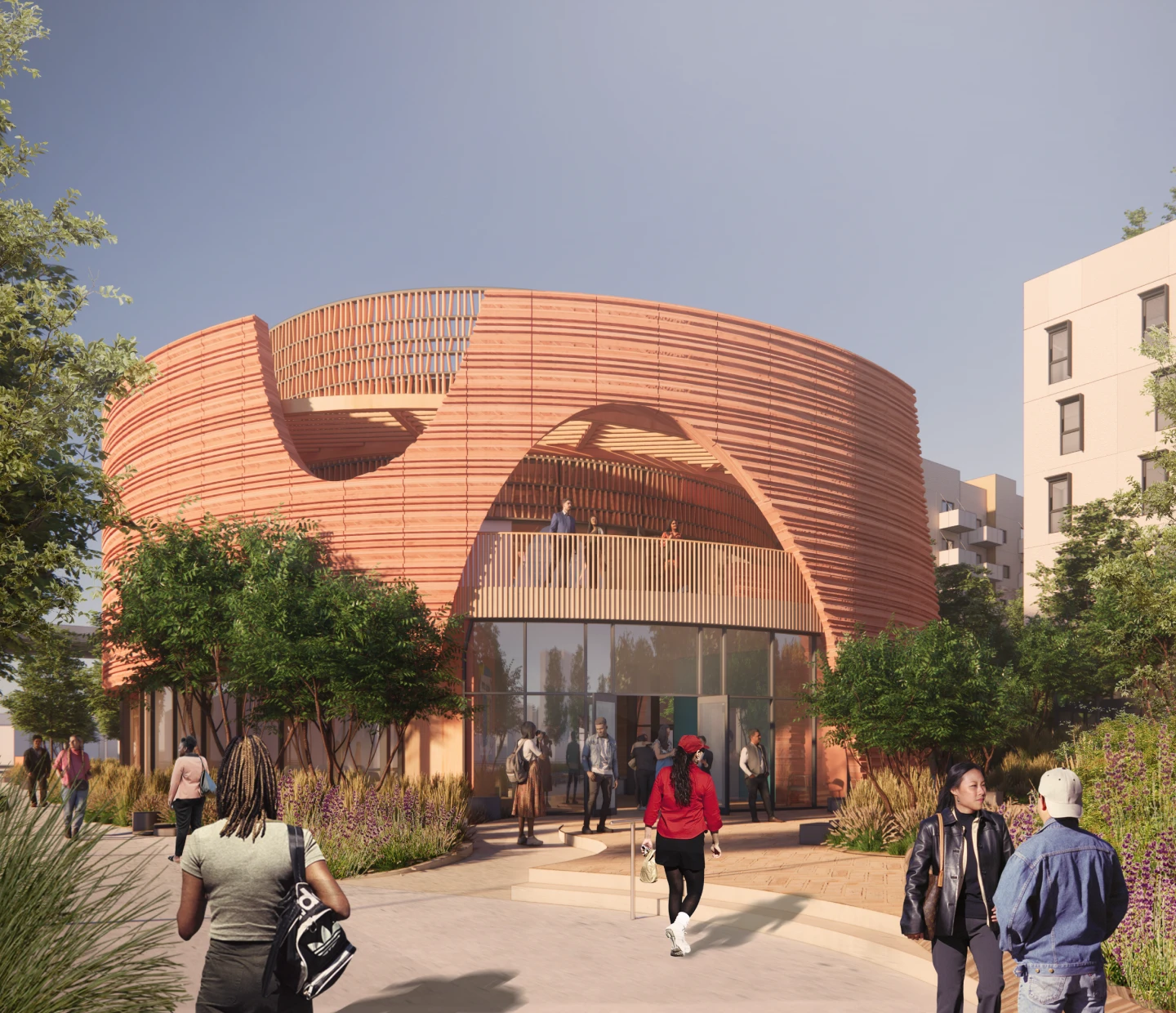
What is the Robert K. Ross Center for Hope and Healing?
The California Endowment developed an initial concept for a multi-use campus. The development will provide approximately 124 affordable housing units within a seven-story building with a mix of 1-, 2-, and 3-bedroom units to provide options for large and/or intergenerational families.
Additionally, the campus will provide approximately 66,000 square feet of community service space.
124 Affordable housing units
66,000 Square feet of community service space
Proposed uses of the community space
The Robert K. Ross Center for Hope and Healing will expand access to health and wellness services, promote healing and restoration, and improve access to basic services. This includes:
Service Coordination
Community Kitchen & Food Access
Basic Needs & Personal Hygiene Services
Physical & Mental Health Services
Counseling
Learning Skills & Classrooms
Workforce Development
Creative Arts Therapy
Community Gathering
Restorative Healing Space
Who is this for?
The affordable housing units and community service space are designed to address the needs of people who are formerly incarcerated and/or unhoused, as well as the predominantly low-income residents of the surrounding communities — namely Chinatown — who have been impacted by gentrification and displacement.
Serving low-income households earning between 30-60 percent Area Median Income (AMI) will be the focus, with a percentage of dedicated units for Coordinated Entry System (CES)-based supportive housing for formerly unhoused households.
When will the Robert K. Ross Center for Hope and Healing be built?
Community visioning and engagement began in 2021 and is ongoing. Construction is anticipated to start 2026/2027 with the goal of completing construction in 2028/2029. Please see the detailed timeline below for more information.
Where will the Robert K. Ross Center for Hope and Healing be built?
The California Endowment is engaging the community surrounding its headquarters to transform its 1.95-acre underutilized backlot at 1000 North Alameda St., Los Angeles, CA 90012 into the Robert K. Ross Center for Hope and Healing.
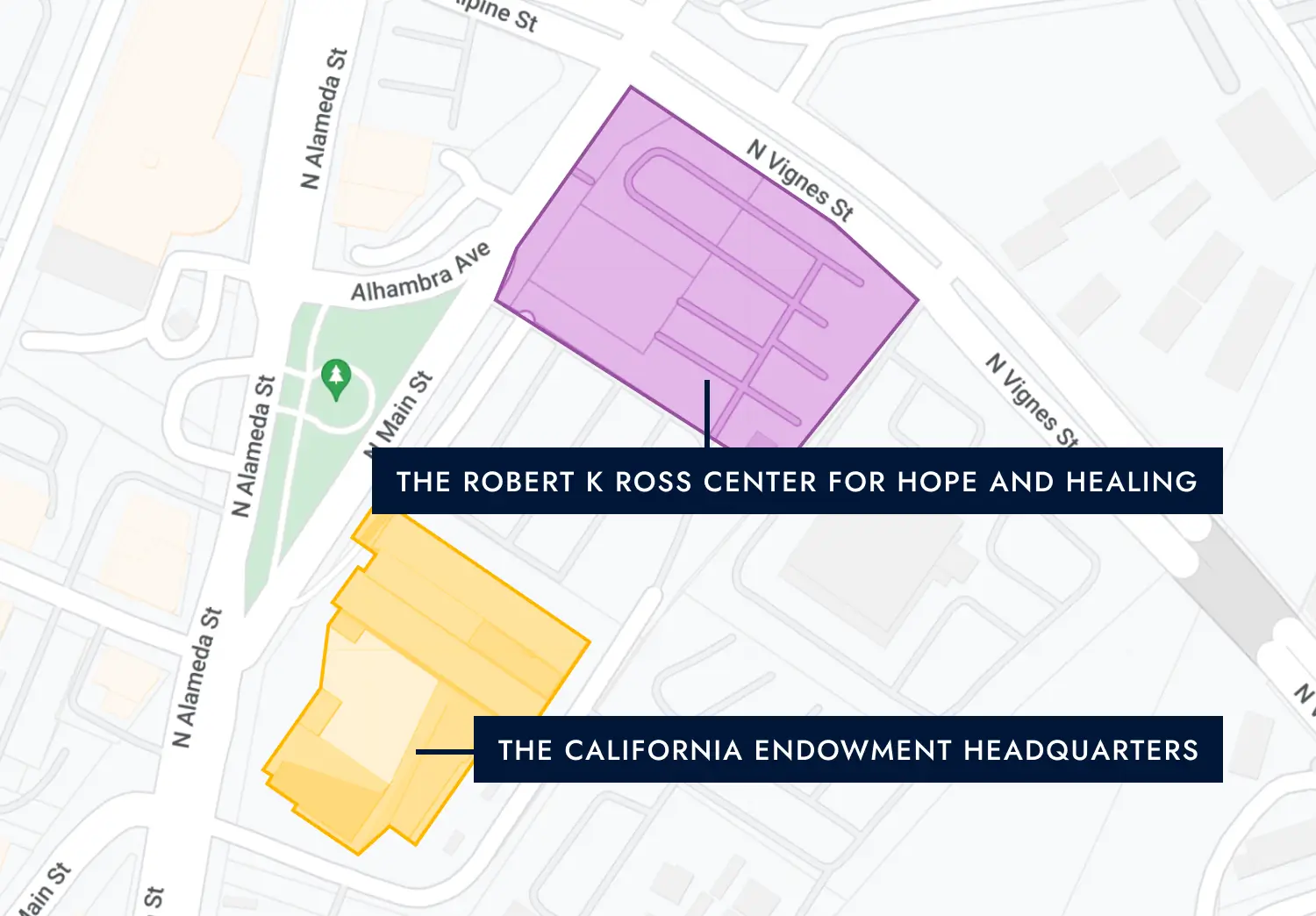
Why is the Robert K. Ross Center for Hope and Healing being built?
TCE’s foundational principles are built on having a “California For All” with a powerful and conscientious voice for wellness, inclusion, and shared prosperity.
Critical to the Endowment’s success is transforming public institutions to become significant investors in, and champions of, racial and social equity. The Robert K. Ross Center for Hope and Healing represents a realization of those ideals.
Project Timeline
Once entitlements and funding are secured, construction could begin as early as 2026 with project completion and opening in 2028/2029.
2021
A nine-month intensive community engagement effort led by Kounkuey Design Initiative and Designing Justice + Designing Spaces helping shape the development and proposed services.
Fall 2022
TCE released a Request for Proposals soliciting proposals from developers.
February 2023
Linc Housing was selected by The California Endowment’s Board to develop the proposed campus.
Summer 2023
In partnership with Linc Housing, a second round of engagement and visioning kicked off. A Community Advisory Board was formed to advise on project development, as well as operations, throughout the life of the project.
May 2024
Entitlement application filed with The City of Los Angeles.
Early 2025
Entitlements received (anticipated).
2026/2027
Funding applications/awards and construction loans secured (anticipated).
Construction start (anticipated).
2028/2029
Construction completion (anticipated). Residential tenant lease-up and community service tenants lease-up. Project opening and move-in (anticipated).
Partnerships & Funding
The California Endowment, Homeboy Industries, and other partners are each working on projects that address housing stability and provide services for justice-impacted, formerly unhoused, and surrounding community members.
The campus is proposed to be financed with traditional debt, state and local funds, tax-exempt bonds, and Low-Income Housing Tax Credits. TCE is providing the land and supplemental capital funding for the campus and will work with Linc Housing to raise additional funding and create partnerships.
In 2021, TCE engaged Kounkuey Design to lead a 9-month community engagement process to better understand community needs and possibilities for the development of the backlot. In 2022, TCE released a request for proposal to solicit a developer for an affordable housing project. In early 2023, TCE selected Linc Housing to lead the planning, design, funding, construction, and operation of the development.
Backstory
The concept of the Robert K. Ross Center for Hope and Healing dates to 2019 when the leadership of the California Endowment began dreaming with Homeboy Industries about ways the properties owned by these two organizations and the surrounding properties could advance the wellbeing of Los Angeles’ most marginalized populations. Leaders recognized that the proximity of TCE and Homeboy to several important sites like William Mead Homes, Hilda S. Solis Care First Village, and county and city-owned properties, presented an opportunity to weave together a comprehensive fabric of community supports and connectiveness—a Hope Village. These beginning conversations coincided with Dr. Robert Ross chairing the Los Angeles County Alternatives to Incarceration Commission. Over time, conversations reimagining the surrounding community gave birth to the vision for the Robert K. Ross Center for Hope and Healing.
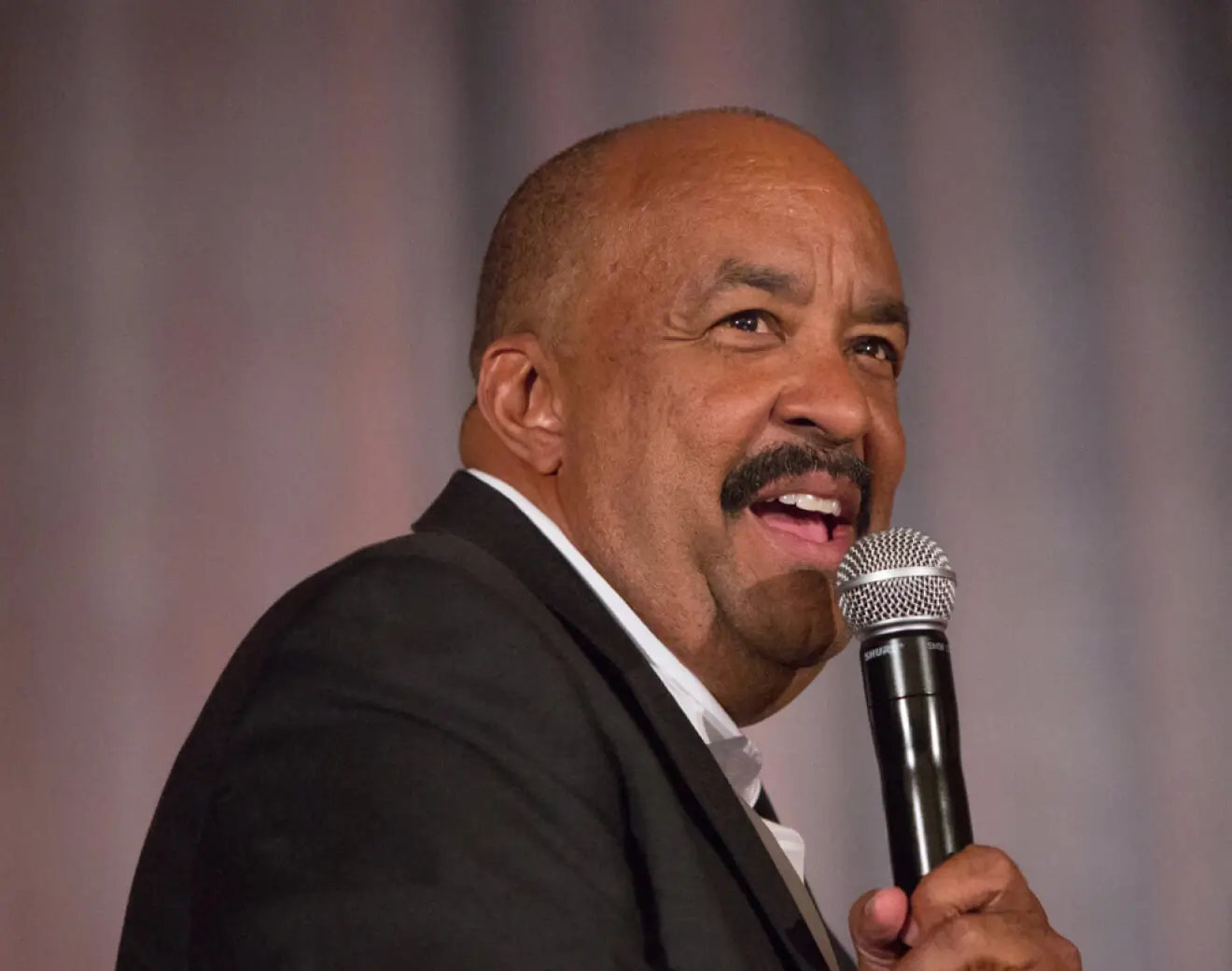
“Someone standing on that corner at Main Street and looking out and the jail is gone. And what's in its place is this community with housing and mental health services and arts programming and job training…a village of real hope.”
Dr. Robert K. Ross TCE President and CEO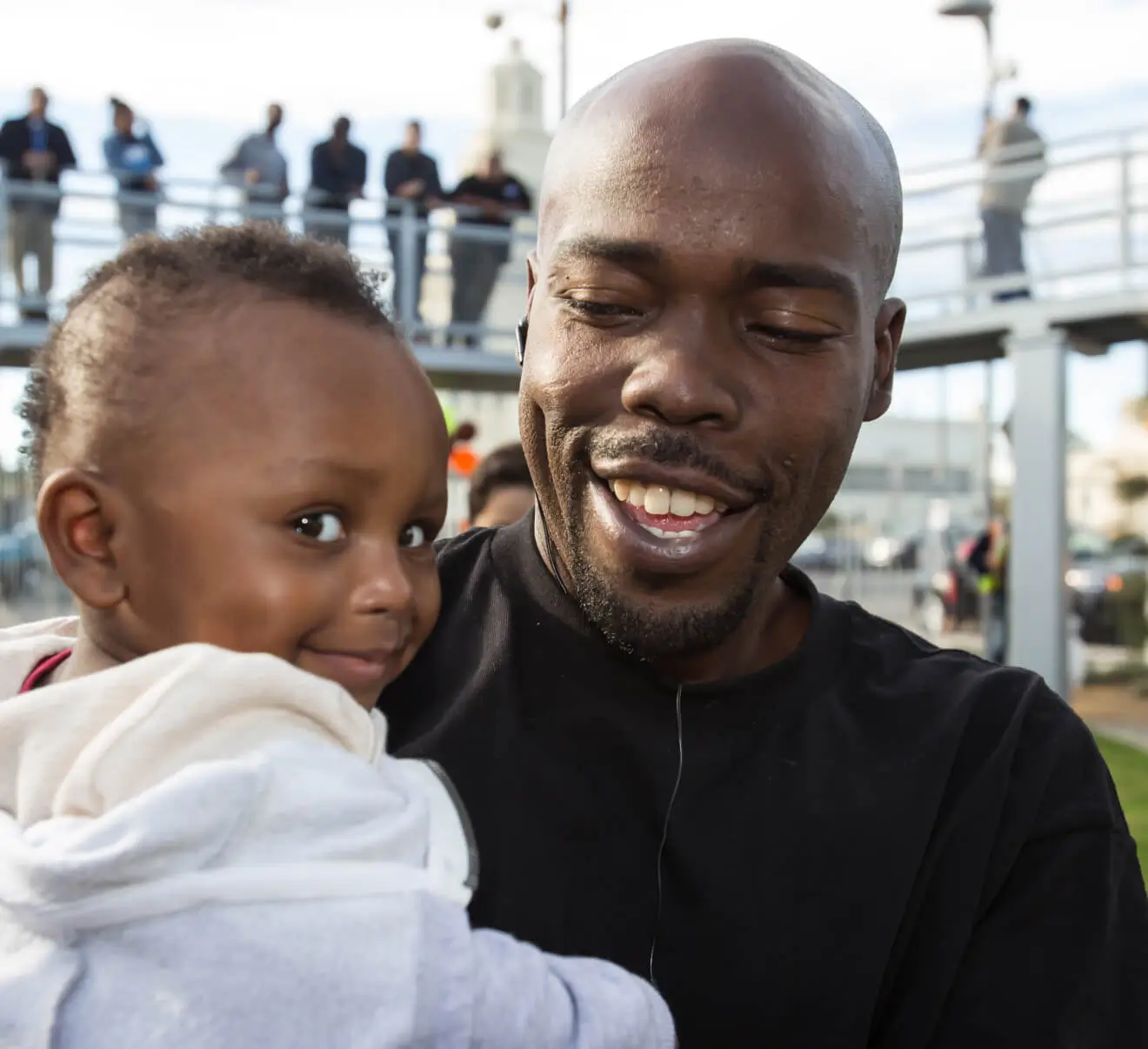
“The model that we want to set is that community comes first, and community voices are uplifted in the development of any project. We spent a year of engagement and we’re spending another year going out to the community, speaking to people about what this property means and what services it can bring,”
Edward de la Torre Co-lead, Robert K. Ross Center for Hope and Healing Project, TCECommunity Advisory Board
To inform the various project stages, the Robert K. Ross Center for Hope and Healing project team is creating many community engagement opportunities to solicit specific feedback as needed. The Robert K. Ross Center for Hope and Healing Community Advisory Board (CAB) is one such opportunity and was formed to advise on project development and operations.
The CAB seeks to be a time-limited convening of diverse stakeholders managed by Linc Housing and Florence Aliese Advancement Network for the sole purpose of providing input on specific project stages. While the CAB may participate in more in-depth conversations on project components, its input is advisory and will be considered on par with other feedback processes hosted by the Robert K. Ross Center for Hope and Healing project team.

Interested in being a part of the CAB?
To ensure a variation in opinions and experiences, applicants may be an individual or represent an organization, and representation from the following demographics is strongly encouraged:
- Persons returning to community after incarceration
- Persons living with disabilities
- Youth (ages 16 to 24)
- Elders (aged 55+)
- Legacy communities representing the historical and cultural history of the project area
- Neighborhood residents residing within proximity to the project site
- Housing justice and care-first (justice reinvestment) advocates
- Business owners and vendors from neighborhoods adjacent to the project site
To express your interest in joining the CAB, complete our application form.
Apply Now If you prefer a paper copy or need assistance in completing the form, please email: HopeVillage@linchousing.org.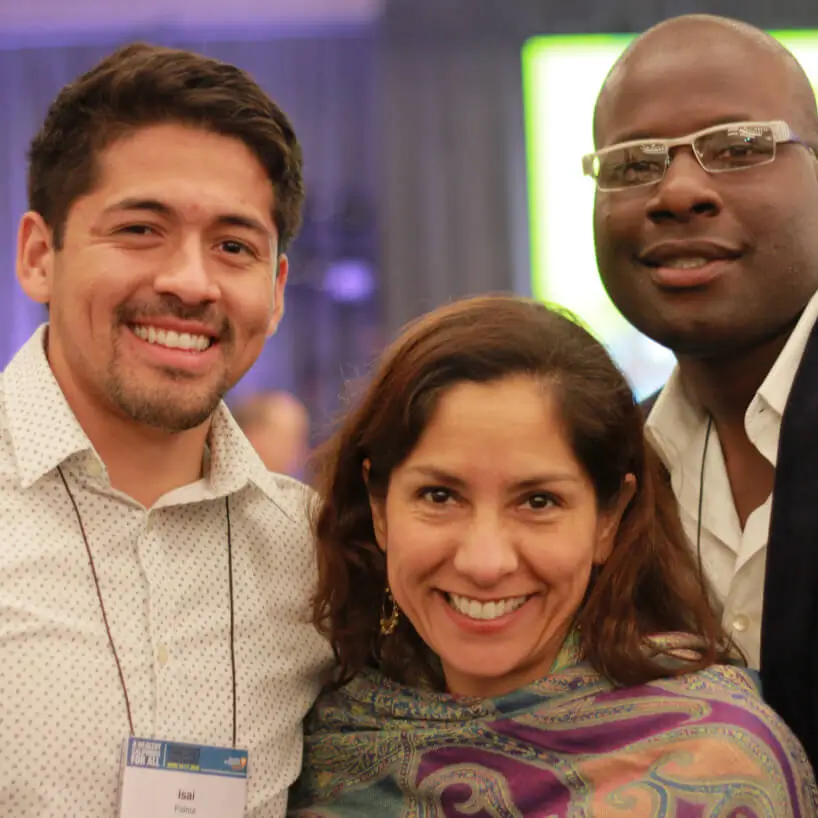
Want To Know More About the Robert K. Ross Center for Hope and Healing?
For more information on how to support the project please contact project co-lead, Edward De La Torre.
Email Edward

Learn About Our
Focus Areas
Supporting people power to achieve health equity for all Californians
Learn More